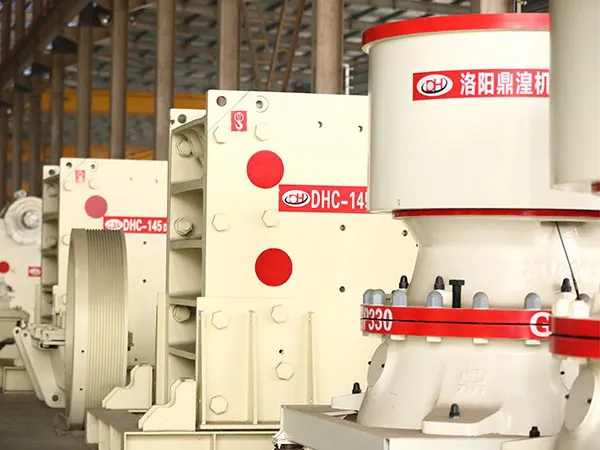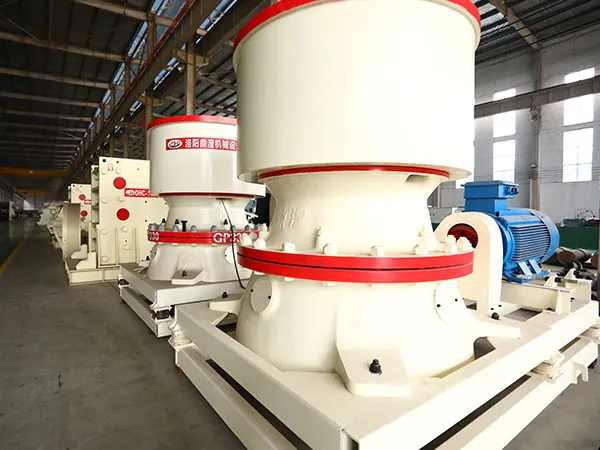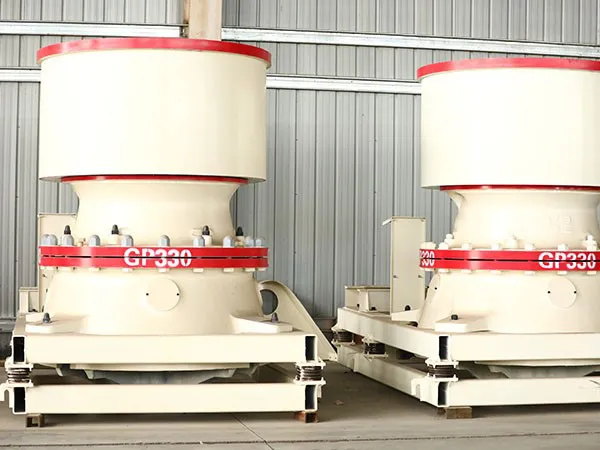Cone crusher configuration refers to the deliberate setup and adjustment of a cone crusher's key operational components and parameters to optimize its performance for a specific application. It's not a single setting, but rather the combination of choices made regarding the crusher's internal geometry, operating dynamics, and how it interacts with the material being processed.

What it is: The shape and design of the mantle (moving crushing surface) and the concave/bowl liner (stationary crushing surface). These liners wear out and are replaced.
Configuration Options: Manufacturers offer various liner profiles typically categorized as:
Coarse / Extra Coarse: Larger feed opening, designed for secondary crushing stages, produces a larger product.
Medium: A balance between feed acceptance and product size, common in secondary or tertiary stages.
Fine / Extra Fine: Smaller feed opening, more parallel zone (area where surfaces are nearly parallel at the discharge), designed for tertiary or quaternary stages, produces a finer, often more cubical product.
Impact: Determines the maximum feed size the crusher can accept, the reduction ratio, the product gradation curve, and capacity.
What it is: The minimum distance between the mantle and the concave at the bottom (discharge) end of the crushing chamber during the crushing cycle. This is arguably the most critical setting.
Configuration: Adjusted typically via a hydraulic mechanism that raises or lowers the main shaft assembly or the upper frame/bowl.
Impact: Directly controls the maximum size of the product discharged from the crusher. A smaller CSS results in a finer product, but generally reduces throughput capacity and increases wear and power draw.
What it is: The magnitude of the off-center circular motion (gyration) of the main shaft/head. This determines how much the gap between the mantle and concave opens and closes during each rotation.
Configuration: Often determined by the specific eccentric bushing installed in the crusher. Some models allow changing the throw by rotating or replacing this bushing. Throws are typically specified in millimeters or inches.

Capacity: Larger throw generally increases capacity.
Reduction Ratio: Larger throw can increase the reduction ratio (how much the rock size is reduced in one pass).
Product Shape: Can influence particle shape.
Power Draw: Larger throw typically increases power consumption.
Choke Feeding: Requires sufficient throw to allow material to progress through the chamber.
What it is: The rotational speed of the eccentric drive, determining how many times per minute the crushing head gyrates.
Configuration: Usually set by the manufacturer for a given model and application, determined by motor speed and pulley sheave sizes (for belt-driven crushers) or gearbox ratios (for direct drive). Limited adjustment might be possible by changing sheaves.
Impact: Affects capacity (higher speed can mean higher potential capacity), product gradation/shape (higher speed can sometimes improve cubicity but might create more fines), and wear patterns.

What it is: How material is delivered into the crushing chamber (e.g., via conveyor, chute, feed box).
Configuration: While not part of the crusher itself, the feed configuration is crucial. The goal is typically choke feeding (keeping the crushing chamber full) with even distribution around the mantle.
Impact: Proper feeding maximizes efficiency, ensures even liner wear, optimizes particle shape (through inter-particle crushing), and achieves consistent throughput. Poor distribution leads to uneven wear, reduced efficiency, and potentially lower quality product.
In Summary:
Cone crusher configuration involves selecting the right liner profile for the application, setting the appropriate CSS to control product size, ensuring the eccentric throw matches the capacity and reduction needs, operating at the optimal speed, and implementing a proper feed arrangement. These elements work together, and adjusting one often requires considering the impact on the others to optimize the crusher for its specific role in the processing circuit.
Address: Luoyang Luoxin Industrial Park, Henan,China
E-mail: sales@yd-crusher.com
Phone: 86-139-3993-0123

Yude
Mechanical
Create the greatest value for customers
Provide the best quality products and services
86-139-3993-0123
sales@yd-crusher.com
Luoyang Luoxin Industrial Park, Henan,China